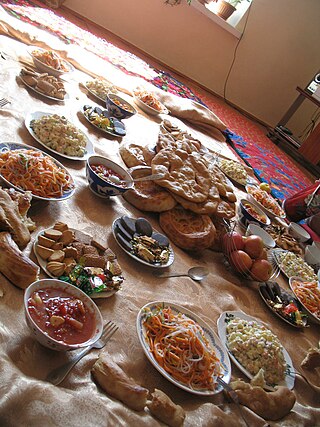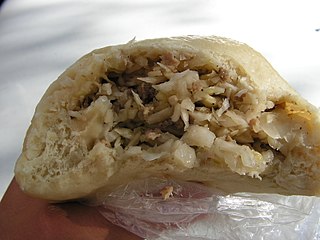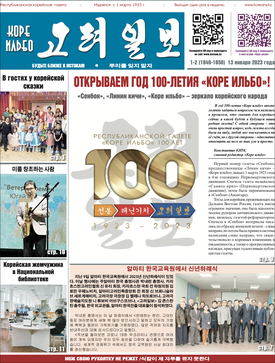
Asian food incorporates a few significant provincial cooking styles: Central Asian, East Asian, North Asian, South Asian, Southeast Asian, and West Asian. A food is a trademark way of cooking practices and customs, usually associated with a specific culture. Asia, being the largest and most populous continent, is home to many cultures, many of which have their own characteristic cuisine. Asian cuisine is considered the “culture of food within a society” because of the beliefs, cooking methods, and the specific ingredients used throughout the entire process. Asian cuisine are also famous about their spices. A main taste factor to Asian cuisine is the “umami” flavor. Umami is a strong savoriness that is a prominent taste among Asian cooking that can be made through fermented food or meat extract.

Central Asian cuisine has been influenced by Persian, Indian, Arab, Turkish, Chinese, Mongol, African and Russian cultures, as well as the culinary traditions of other varied nomadic and sedentary civilizations. Contributing to the culinary diversity were the migrations of Uyghur, Slav, Korean, Tatar, Dungan and German people to the region.
Koryo-saram or Koryoin are ethnic Koreans in the post-Soviet states who descend from Koreans who were living in the Russian Far East.
Koryo-mar is a dialect of Korean spoken by Koryo-saram, ethnic Koreans who live in the countries of the former Soviet Union. It is descended from the Hamgyŏng dialect and multiple other varieties of Northeastern Korean. Koryo-mar is often reported as difficult to understand by speakers of standard Korean; this may be compounded by the fact that the majority of Koryo-saram today use Russian and not Korean as their first language.

Ushtobe is a town and seat of Karatal District in the Jetisu Region of south-eastern Kazakhstan. Population: 24,895 ; 22,472.
There is a population of ethnic Koreans or Korean nationals in Ukraine. A significant group among them are ethnic Koreans called Koryo-saram: these people arrived in the former Soviet Union during the Japanese colonial period and spread throughout the region especially after their forced migration in 1937. Another group is the Sakhalin Koreans, who lived on the island of Sakhalin and are often considered culturally distinct from other Koryo-saram. There are also South Korean expatriates in Ukraine.

Carrot salad is a salad made with carrots. Recipes for carrot salad vary widely by regional cuisine. Shredded carrot is often used. Shredded carrot salads are often used as a topping for other dishes.

Morkovcha, also known as Korean-style carrots or Korean carrot salad, is a spicy marinated carrot salad. It is a Koryo-saram variant of kimchi.

Pyanse or pigodi is a Sakhalin Korean steamed pie, bun, or dumpling stuffed with cabbage and meat. It is a popular dish in the Russian Far East, as well as in Koryo-saram communities of Central Asia.

The Koryo Ilbo is a newspaper published in Korean and Russian from Almaty, Kazakhstan, for Koryo-saram: ethnic Koreans of the former Soviet Union. First published in 1923 as the March 1 Newspaper, it changed its name to Sŏnbong, then to Lenin Kichi in 1938, and finally to Koryo Ilbo after the dissolution of the Soviet Union in 1991. It is notable for being one of the oldest Korean-language newspapers and the oldest active outside of the Korean peninsula, having celebrated its 100th anniversary in 2023. It was also for decades the only Korean-language newspaper with nationwide availability in the Soviet Union and a significant promoter of the literature of Koryo-saram, during a period when regional languages were suppressed by the government.

Funchoza or salat funchoza is a dish in Koryo-saram cuisine. It is variant of the Korean dish japchae, created by Koryo-saram: a group of the Korean diaspora of the former Soviet Union.
Cafe Lily is a Korean Uzbeki restaurant in the Bensonhurst neighborhood of Brooklyn in New York City, New York, United States. It opened in 2015.

The Ussuriysk Korean Cultural Center is a branch of the South Korean organization Korean Cultural Centers in Ussuriysk, Primorsky Krai, Russia. It was built in 2009, and serves as an activity center for Koryo-saram: ethnic Koreans of the former Soviet Union. It also houses the Maritime Territory Koryo-saram Cultural Association.

Gwangju Koryoin Village (Korean: 광주고려인마을) is an enclave of Koryo-saram in Wolgok-dong, Gwangsan District, Gwangju, South Korea. Along with Ansan's Ttaetgol Village, it is one of the largest communities of Koryo-saram in the country. It had around 7,000 Koryo-saram residents by 2022.

Ttaegol Village (Korean: 땟골마을), alternatively Ddaetgol Village, is an enclave of Koryo-saram in Seonbu-dong, Danwon District, Ansan, Gyeonggi Province, South Korea. In Russian, the area goes by Ttekkol Samgori, where "samgori" is Korean for "three-way intersection". Around August 2022, around 7,000 people in the village were Koryo-saram. Along with Gwangju Koryoin Village, it is one of the largest Koryo-saram enclaves in the country.
Sakhalin Koreans are a group of ethnic Koreans on the island of Sakhalin, Russia. They have a distinct style of cuisine that descends from Korean cuisine and Russian cuisine. They are often considered distinct from Koryo-saram, Koreans of the former Soviet Union, whom have their own cuisine.
Pukjai or bukjai is a soybean stew dish in Koryo-saram cuisine. It is a descendent of the Korean dish doenjang-jjigae. The dish uses soybean paste as the base flavoring for the broth. Various ingredients are then added to the base stew.
Siryak-tyamuri is a stew in Koryo-saram cuisine that uses fermented soybean paste as the primary flavorant for the broth. It is a descendent of the Korean dish siraegidoenjang-guk, and prominently features siraegi, dried radish stems.
The Karatal District Korean History Center is a local and ethnic history museum dedicated to the Korean community in Karatal District. It is located in Ushtobe, Kazakhstan.












